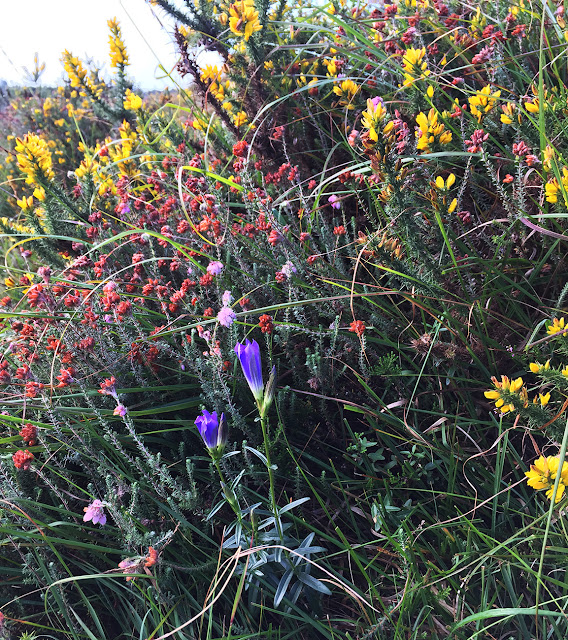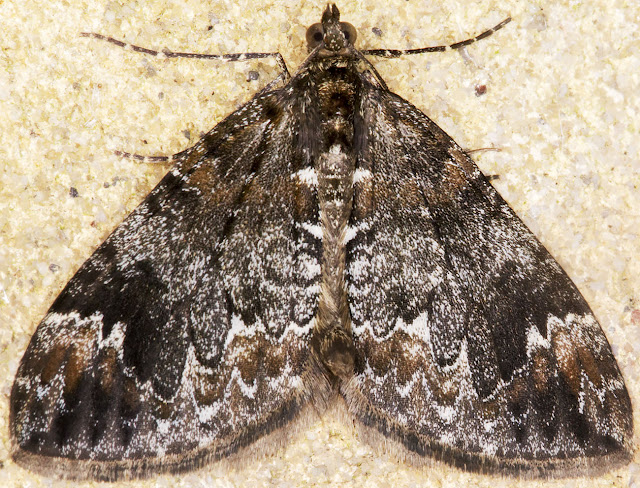 |
| Camps in a grove on Ashdown Forest. |
Here are some impressions of the Ashdown Forest, which is mostly moorland. But it does have plenty of trees, some in groves like this one which is just downhill from The Hollies car park, some in woods, some along streams.
I wrote to a friend recently that you can't get lost in the Ashdown. That's because it consists of several large hollows with roads along the high points, so that if you go uphill you will eventually find a road. And you can see across the hollows to the high points opposite.
But you can't get lost only as long as you are mobile. There are plenty of places where it would be hard to find you if you got stuck or had an accident. And there are plenty of places where you could do just that.
 |
| The Airman's Grave, downhill from The Hollies car park. Ashdown Forest, 31 August 2017. |
Here you can see a broad path downhill, houses in the distance, it looks as though you could walk to the far side of this depression to that ridge of trees in less than an hour, if the path carries on like this.
 |
| Pool on Ashdown Forest, 31 August 2017. |
Just at the bottom of this immediate dip is a stream, with pleasant pools. I'd been taken on a walk here about 10 years ago and shown an interesting fungus, so I tried following what I could remember of the way: cross the stream and walk up it, looking for a place to cross back.
 |
| A path on Ashdown Forest, 31 August 2017. |
I didn't find the second crossing place. I was soon walking on this path, which is not exactly well-trodden. The bracken I pushed through was covered with dew and I was wet to the waist, and completely soaked to the knees. My view ahead was this, with trees screening my view of the stream to the right, and to the left:
 |
| View from a path on the Ashdown Forest, 31 August 2017. |
This looks very different from the safe-looking broad path I started out on. It was lucky I knew to keep going uphill, because after eventually negotiating some boggy ground which fed the stream I got back safely. But if I had fallen at this spot, who would have found me? I was pleased that I had a good signal on my phone. (Another sign of not being in a real wilderness.) And the GPS was invaluable, as it showed me where I was on a map.
It was fun! And I saw this:
 |
| Marsh Gentian, Gentiana pneumonanthe. Ashdown Forest, 31 August 2017. |
A Marsh Gentian, quite a scarce plant which I had seen a few miles away on another part of the Ashdown on a different walk. Around it are the mauve clusters of Cross-leaved Heath flowers, and yellow Dwarf Gorse flowers.
That walk was only a short distance, but it felt longer.











